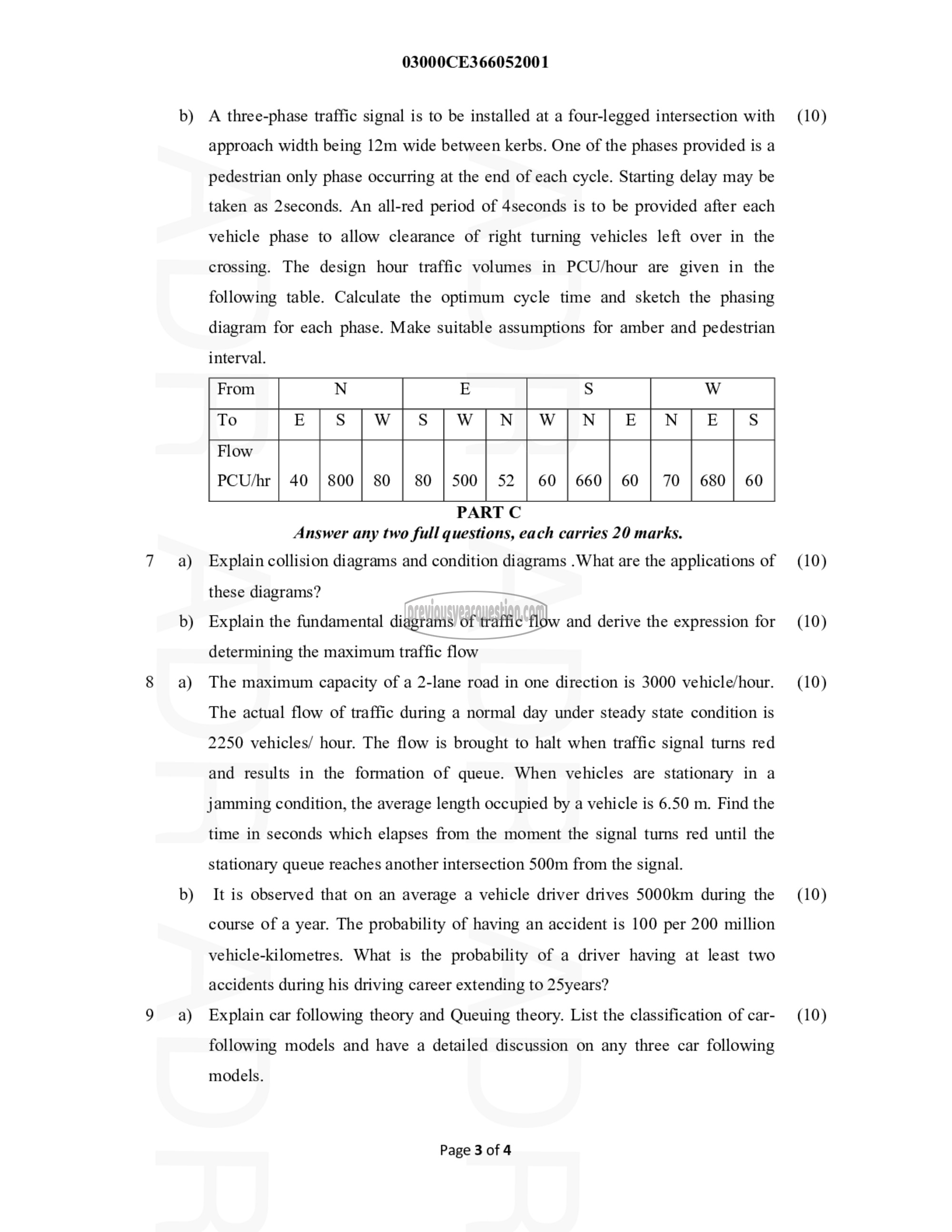APJ ABDUL KALAM TECHNOLOGICAL UNIVERSITY Previous Years Question Paper & Answer
Semester : SEMESTER 6
Subject : Traffic Engineering and Management
Year : 2020
Term : JUNE
Branch : CIVIL ENGINEERING
Scheme : 2015 Full Time
Course Code : CE 366
Page:3
b)
a)
b)
a)
03000CE3 66052001
A three-phase traffic signal is to be installed at a four-legged intersection with
approach width being 12m wide between kerbs. One of the phases provided is a
pedestrian only phase occurring at the end of each cycle. Starting delay may be
taken as 2seconds. An all-red period of 4seconds is to be provided after each
vehicle phase to allow clearance of right turning vehicles left over in the
crossing. The design hour traffic volumes in PCU/hour are given in the
following table. Calculate the optimum cycle time and sketch the phasing
diagram for each phase. Make suitable assumptions for amber and pedestrian
interval.
From N E 5 WwW
To 2 | 9 | | ऽ | | द | | द| ए | पि | 8 | 5
Flow
PCU/hr | 40 | 800 5 5 500 | 52 5 ಔ 6 70 | 680 5
PART C
Answer any two full questions, each carries 20 marks.
Explain collision diagrams and condition diagrams .What are the applications of
these diagrams?
Explain the fundamental diagrams of traffic flow and derive the expression for
determining the maximum traffic flow
The maximum capacity of a 2-lane road in one direction is 3000 vehicle/hour.
The actual flow of traffic during a normal day under steady state condition is
2250 vehicles/ hour. The flow is brought to halt when traffic signal turns red
and results in the formation of queue. When vehicles are stationary in a
jamming condition, the average length occupied by a vehicle is 6.50 m. Find the
time in seconds which elapses from the moment the signal turns red until the
stationary queue reaches another intersection 500m from the signal.
It is observed that on an average a vehicle driver drives 5000km during the
course of a year. The probability of having an accident is 100 per 200 million
vehicle-kilometres. What is the probability of a driver having at least two
accidents during his driving career extending to 25years?
Explain car following theory and Queuing theory. List the classification of car-
following models and have a detailed discussion on any three car following
models.
Page 3 of 4
(10)
(10)
(10)
(10)
(10)
(10)
